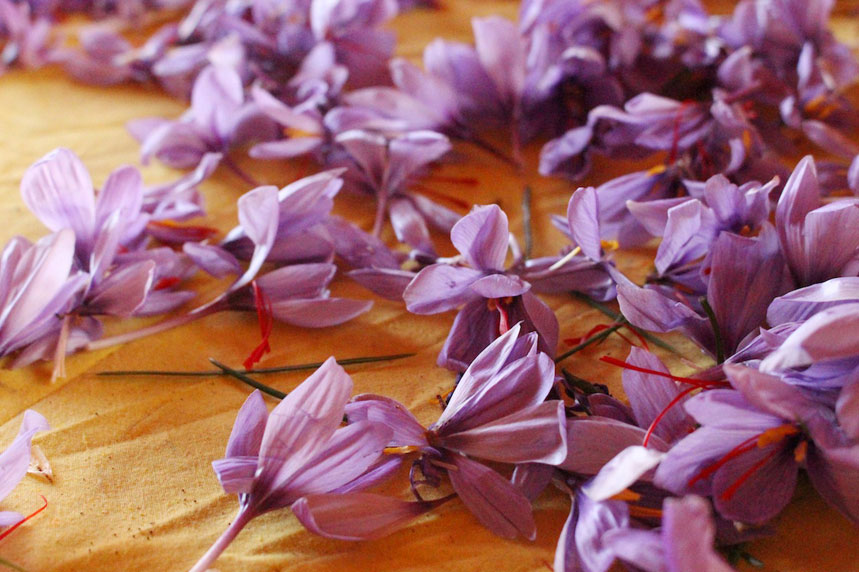
16 Nov Saffron harvest in Morocco’s Ourika Valley
It’s early morning and approximately 65 women from the village have gathered to begin picking the saffron crocuses. It’s time to harvest the saffron and because of the sudden drop in temperatures followed by several days of unseasonably warm daytime temperatures, the harvest lasted mere days rather than approximately three weeks in standard years, explains Miloud the manager at Saffron Gardens in Tnine Ourika.
The gardens are spread over four hectares, and just after by 9 a.m. the women have gathered round the wooden tables indoors, the flowers spread out and ready for the next phase of the work – separating the red stigma (the part which produces the saffron) from the rest of the flower.
When I asked Miloud why the work had to start so early, he explained that the flowers must be picked before they bloom for the day to protect the stigma from light, dust and damage.
With 115 flowers required to produce one gram of saffron,the women have their work cut out for them. And it’s a process completed entirely by hand here at Saffron Gardens.
“The women love this work. It gives them a chance to be together, socializing with each other and chatting to tourists as they pass by the gardens,” says Miloud with a laugh.
Once separated, the drying process begins. Here at Saffron Gardens this is completed by a machine in a dust-free, non oxidized environment lasting only 20 minutes. Then the saffron is stored in air-tight containers in a cold place.
In normal years the farm produces five to six kilograms of saffron to be sold on site. This year however because of the cold snap this year they have harvested only two kilograms of the famous spice.
Good vs. bad saffron
With such a small quantity available, the quality of saffron for sale in the souks is sure to be questionable. I asked Miloud how to determine good quality saffron from the bad and it’s not as straight-forward as you may think. Saffron dried in the sun, and therefore exposed to more dust and light, is red, yellow and white while machine-dried saffron is a bolder, deeper red. Sun-dried saffron is also heavier as it doesn’t lose as much of its weight during the drying the process. He also explained that other elements of the flower may have been added to the saffron to add to its weight given it is often sold by the gram. True saffron must produce a yellow colour when moistened.
The saffron harvested at Saffron Gardens is only for sale on site, but is open daily for visits to the garden followed by a delicious cup of tea under the olive trees.
Our concierge is on site to to arrange day trips for guests staying at Riad 72 or Riad Due, providing an authentic travel experience and deeper understanding of Moroccan culture.

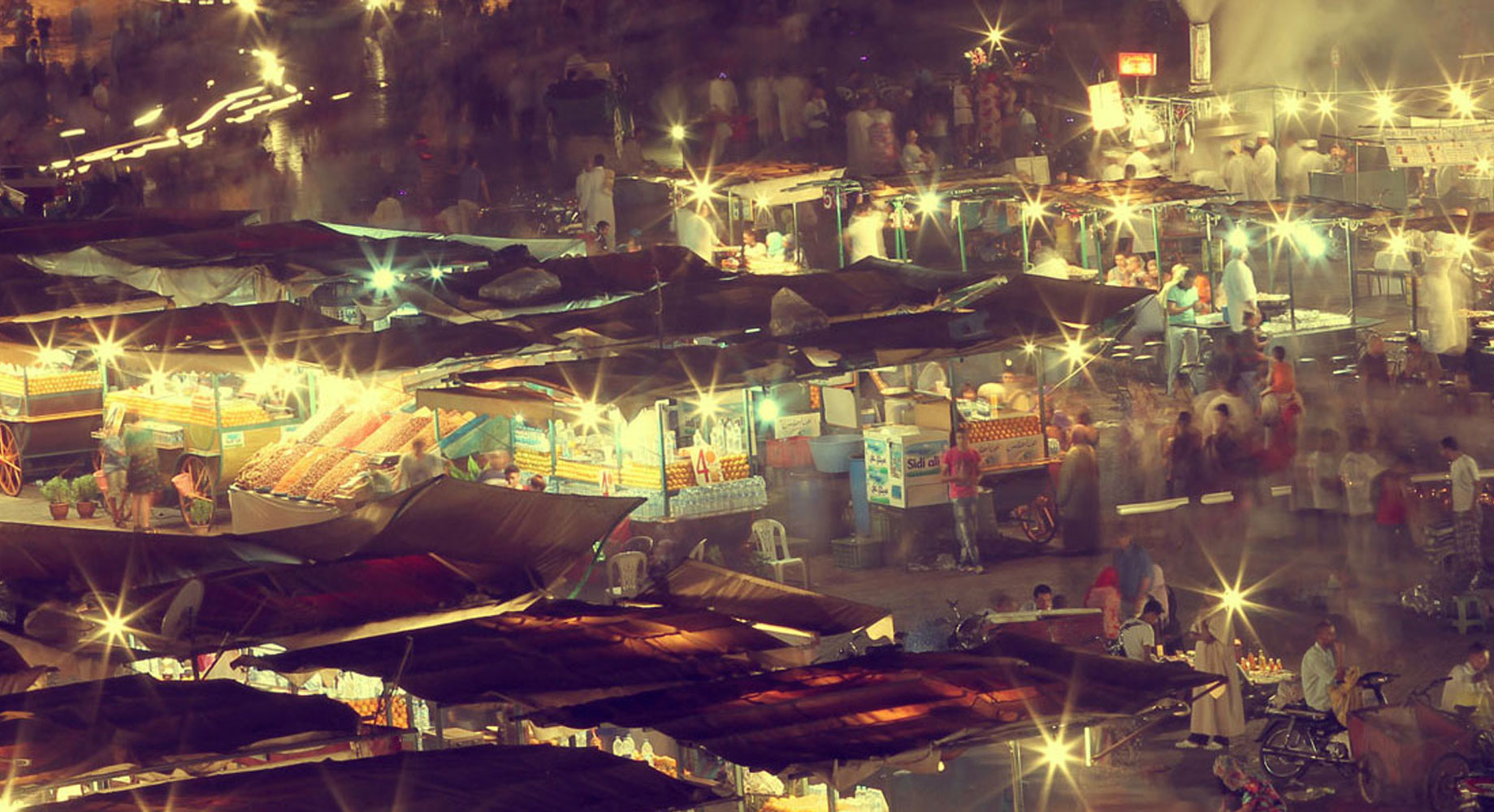


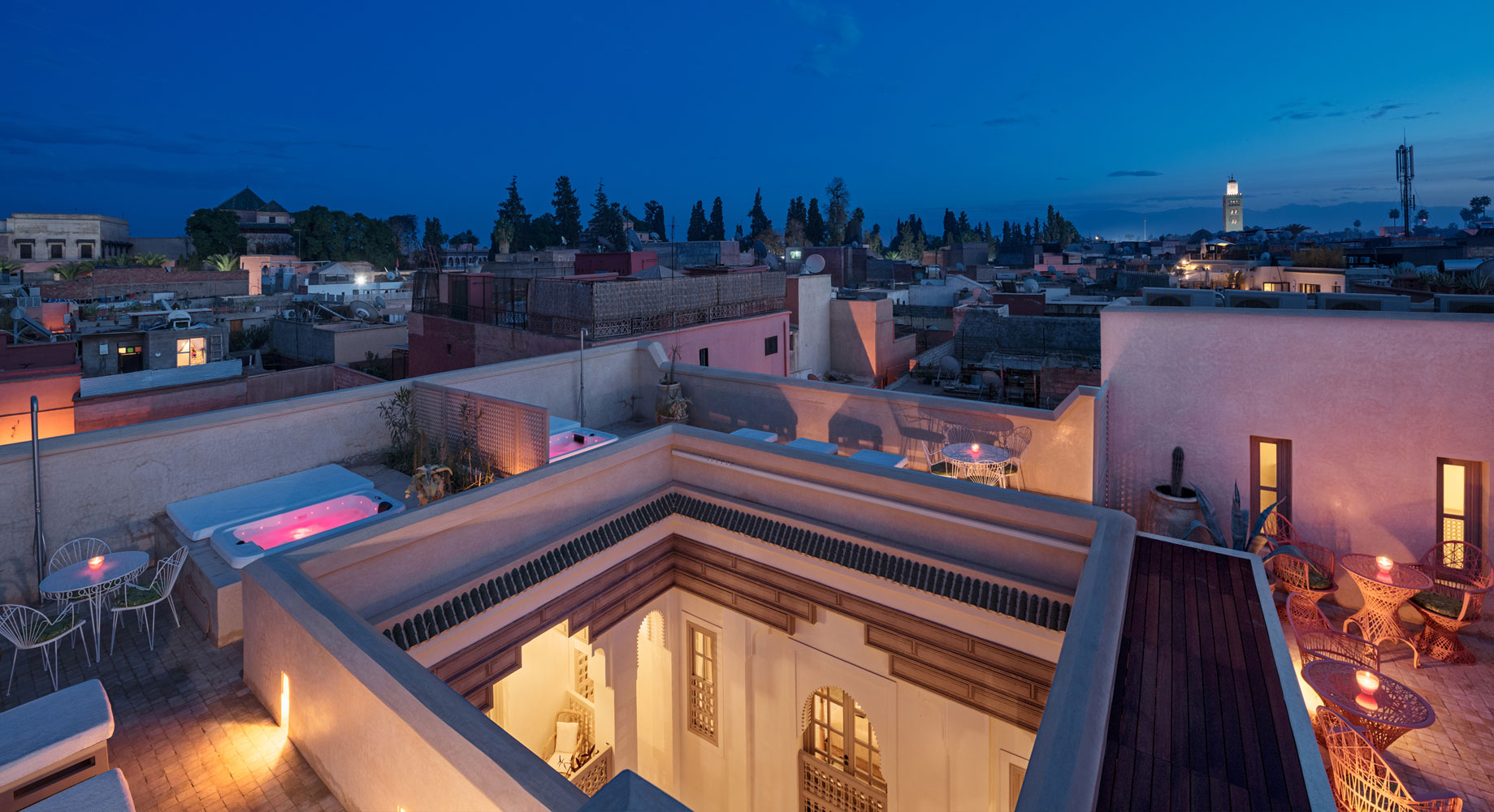
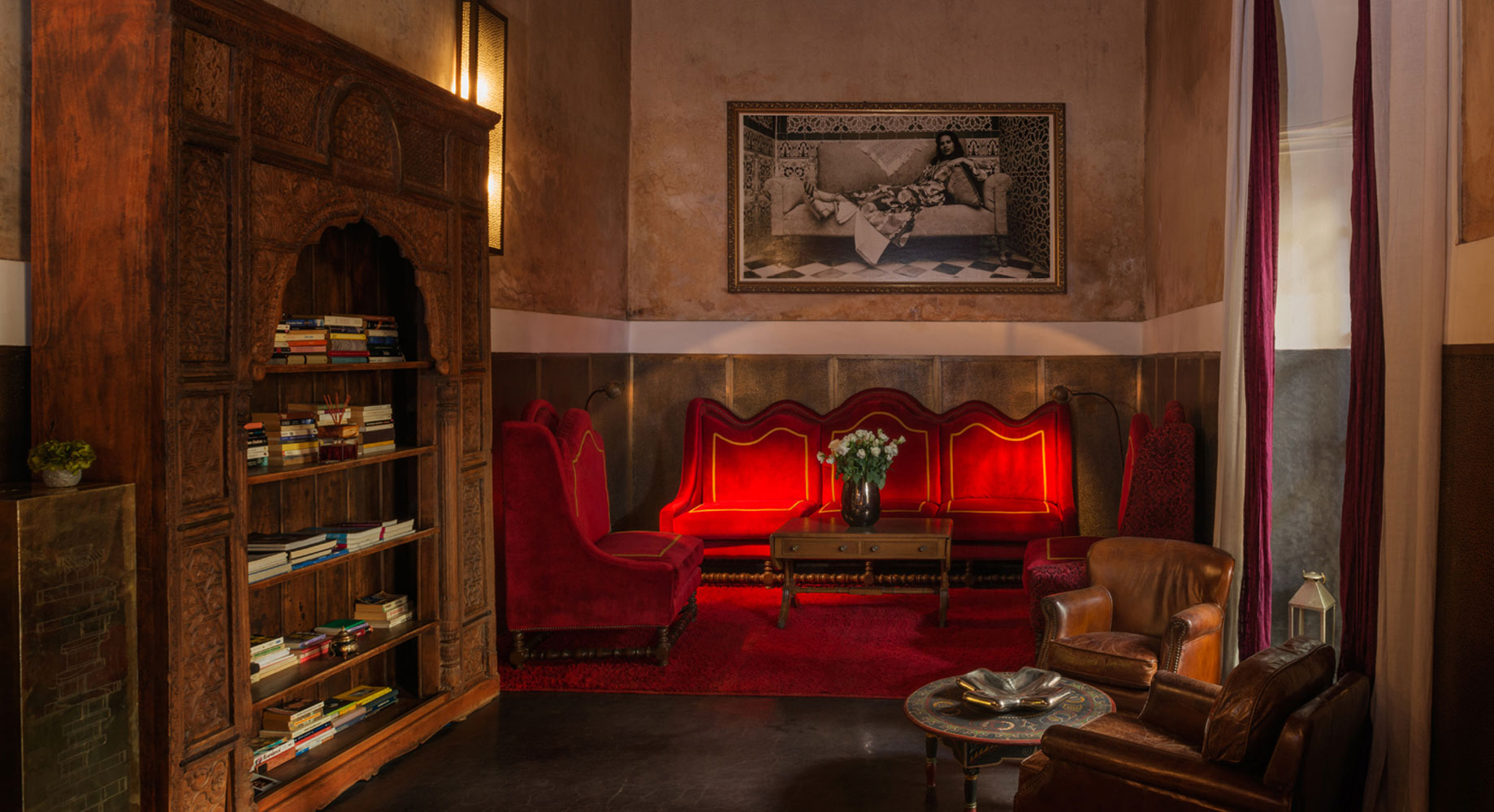
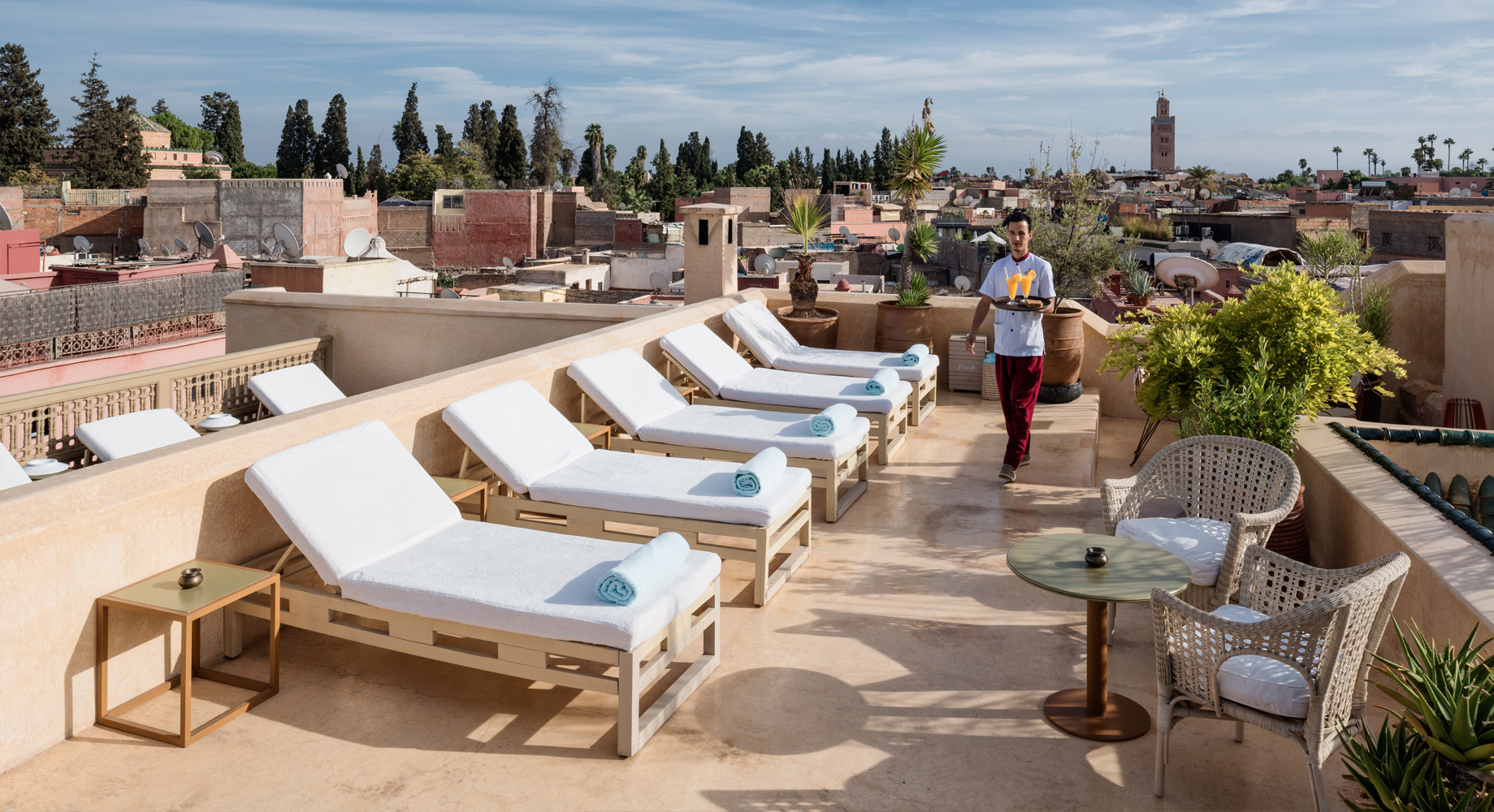
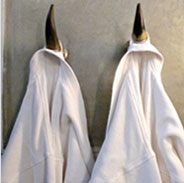
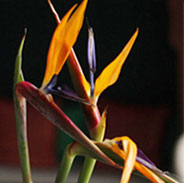
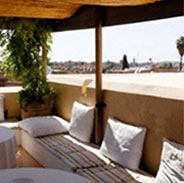
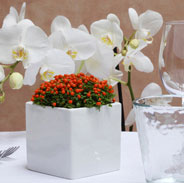
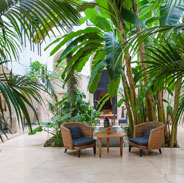
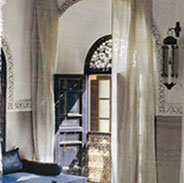

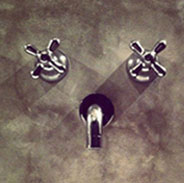
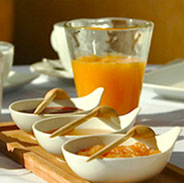
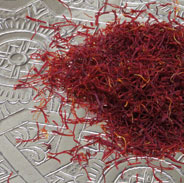
Sorry, the comment form is closed at this time.